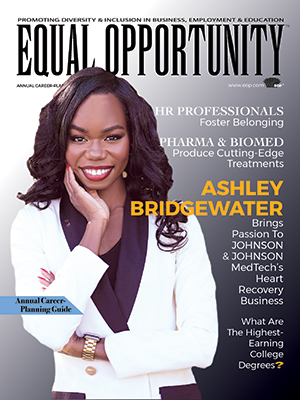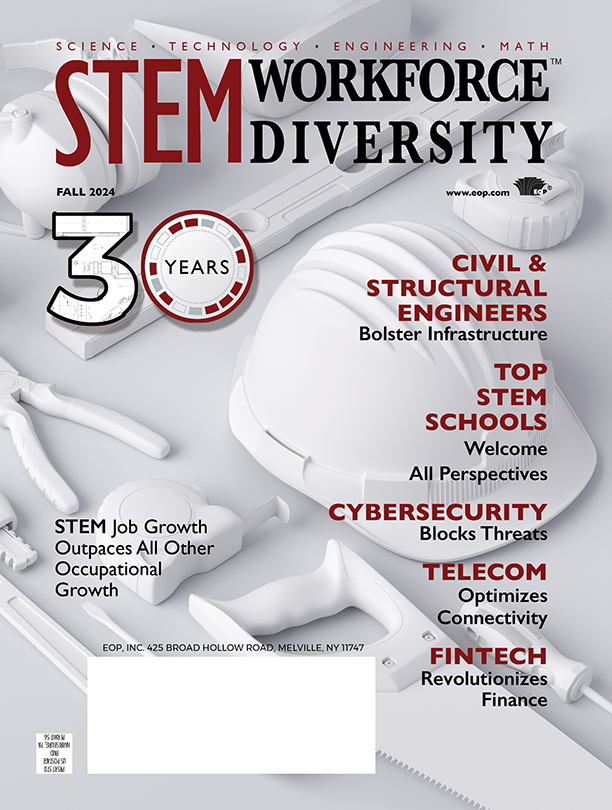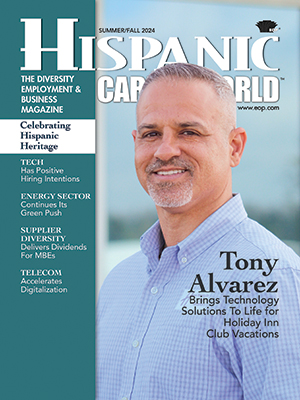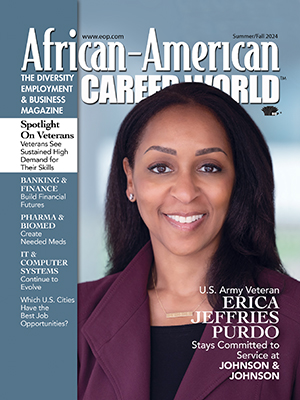By Rachel Sokol
Pondering a career in STEM? These featured experienced, stellar STEM leaders here share what make these fields so special and what kind of cutting-edge careers are available, and provide the steps to step into STEM.
Gandhikota Advises SAP Clients Across North America
When working in textile manufacturing, Prasad Gandhikota, realized he needed what he calls “a major career change.”
That change became a switch to working in technology – after all, he studied STEM in college and found it rewarding.
“I realized I could utilize my depth and breadth of manufacturing expertise to assist a wide variety of industries within the sector,” he explains.
So, back in in 2004, Gandhikota successfully completed a full-time MBA program in marketing and information technology (IT). “[This was] followed by SAP certification in supply chain manufacturing from SAP AG Walldorf, which provided me business and technology skills,” he adds.
Today, as a senior business processes consultant for SAP, he advises clients across North America and works with companies in the automotive, aerospace and defense (A&D), consulting, and food manufacturing sectors. Gandhikota’s based in Arizona now, but he’s worked in Asia, the U.K., and Mexico, and across the U.S.
“The technology profession has provided me with global exposure,” he reflects. “Education through upskilling and reskilling have kept me up-to-date in the latest developments and advancements in my field of supply chain management.”
A life-long learner, Gandhikota has written articles for International Journal of Innovative Science and Research Technology (IJISRT) and SAP Insider about supply chain management, mergers and acquisitions, and technological innovations.
He’s worked in STEM for nearly 25 years. Based on that experience, he advises those interested in the STEM fields to use your creative skills “to innovate, design, and deploy solutions to complex business challenges.”
However, he adds this always “requires sacrifice.”
For example, when Gandhikota was pursuing an MBA and SAP certification, he was away from his family. “As my career grew, I started travelling four days a week doing consulting work helping Fortune 500 companies in their business and digital transformation programs,” he explains.
“However, I maintained a healthy work-life balance through precise prioritization, delegation and creating guidelines. This helped me to effectively execute multimillion-dollar information (IT) programs and deliver the projects on time, and within budgets. I used the skill of influence rather than direct authority.”
Here’s Gandhikota’s advice when interviewing for STEM opportunities: “Frame your answers in the situation, task, action, and result (STAR) methodology. Also be prepared to ask intelligent questions when given the opportunity. Be precise and to the point when answering technical questions, and research the company prior to your interview.”
In addition, when you settle into your new STEM job, understanding the importance of healthy work-life balance and promoting it among your teams is key, according to Gandhikota.
“A healthy body, [with] a healthy mind, is crucial for a healthy work-life balance,” he stresses. “I meditate at 4 a.m. daily, which is considered most auspicious, and I get all of my creative ideas during this time. I also meditate before sleep to relax my mind.”
SAP’s U.S. headquarters is in Newton Square, PA. Careers are posted at jobs.sap.com. Follow on Facebook, Glassdoor, YouTube, LinkedIn and Instagram.
Chen Molds the Next Generation of Talent & Tech at Mazda
Jay Chen has gone from playing with Matchbox cars as a child to working for a major real-life car company as the now manager of powertrain performance at Mazda R&D, part of Mazda North American Operations. His chosen career was clearly his destiny since childhood.
“I liked taking things apart to figure out how they worked and, if I was lucky, being able to put them back together again,” shares Chen.
“I’ve spent a lifetime being a gearhead. The passion that comes with combustion and power – without much thought of the ramifications – drove most of my aspirations.”
Construction a car is, indeed, exhilarating. However, as regulations and the climate changes, he explains, building a car driven only by passion is exceedingly difficult, and sometimes constraining.
“Green technologies, innovative solutions, and the organizations the next generation is building inspire me as an engineer, a manager, and a human being,” shares Chen, who further notes, that being part of the effort “to find solutions to our generational challenges gives me hope, and I see a lot of opportunities for engineers to continue to solve relevant problems.”
He’s transparent about the fact that, sure, technological advances are exciting, but he advises taking a pause before utilizing them immediately at work.
“As society and technology becomes more connected and efficient, there always seems to be less time to take a moment to think before acting,” he elaborates. “Time to think, consider and discuss often reduces the chances of sloppy mistakes. Without it, a lot of our decisions and actions are more reactionary rather than planned.”
But, he continues, “that may also be related to my personality of needing to get things done and responding to pressure.”
Work keeps Chen driven, challenged and, most importantly, learning. “But the newest project I’ve really found meaningful, and satisfying, is the training and molding of the next generation of engineers that will solve the problems I have yet to solve.”
He reflects on what his STEM job has taught him: “As I get older, a lot of my prioritization is about understanding the bigger business and engineering pictures, and learning from experiences to avoid past pitfalls.”
For example, if you make decisions or prioritizations with a narrow view, then “you might find yourself investing time and energy into something that may quickly lose relevance or direction. Additionally, one of the most important things is communication and trust with your managers and teams. If there’s a mutual dialogue, then there’s a minimal amount of second guessing, allowing team members to march in the same direction with the same priorities.”
Chen’s parting career advice is to “learn discipline, but remember that, at the end of the day, you’re solving human problems created by human beings, and, because of that, human communication, emotion, art, and empathy are every bit as important as trying to find the right answer is.”
Mazda’s U.S. headquarters is in Irvine, CA. Careers are posted at mazdausa.com/site/careers. Follow on Instagram, Facebook, X, YouTube, LinkedIn, Instagram and Threads.
Kalekar Focuses On Effective Collaboration & Communication Strategies at Xero
In her previous role leading global money movement at Stripe, Prajakta Kalekar spearheaded innovative payment experiences for small businesses. This experience helped Kalekar seamlessly transition into her current role of vice president and general manager of engineering at Xero, a global small business cloud accounting platform with more than 4,000 employees.
“I’m excited to continue serving the global small business community by applying my understanding of the small business user needs in domains beyond just payments – like accounting, cash flow and financial management,” she enthuses.
Her job responsibilities also entail collaboration with audiences who have varying levels of technical expertise, be it customers, board members or architecture leads. “With any communication, there are two key factors to consider,” elaborates Kalekar.
“First, understanding the audience – what do they care about the most, and what’s their technical expertise? Second, understand what you want to achieve from this communication – for instance, do you want to encourage your customer to adopt a new application programming interface (API) or persuade leadership to invest in a new technology?”
Effective multitasking is crucial to Kalekar’s role. “Firstly, I prioritize my time by actively managing my calendar, ensuring I only attend meetings where I can add significant value, and delegating, when necessary,” she explains.
“Secondly, I utilize the Eisenhower Matrix to categorize tasks based on urgency and importance, allowing me to be intentional about where I focus my energy.”
Lastly, she adds focus blocks on her calendar to carve out dedicated time for critical tasks, which ensures they receive the attention they deserve amid competing priorities. “These strategies help me manage a demanding workload while maintaining productivity and balance.”
The day-to-day work of running a small business can be hard, indicates Kalekar. “Solving small business needs presents a unique duality. On one hand, solutions must be hyperlocalized, addressing regional compliance needs and user experience (UX) nuances.”
On the other hand, she states that “we must also ensure the solutions we build are global and scalable. For instance, how do we scale our accounting platform for millions of global users and ecosystem partners? I find it especially rewarding to creatively address both of these problems – the hyperlocal needs and the global-scale challenges.”
Kalekar finds the T-shaped method of communication very helpful at work. “I lead with what the audience cares about and clearly articulate the goal or ask. That’s the top of the T. Then I delve into the relevant technical details in a way that aligns with the audience’s interests and expertise level.”
For instance, she applies this if she’s trying to persuade a customer to migrate to a new API. “I might say, ‘We’d like for you to migrate to a new API, which will reduce your time spent in bank feed reconciliation by 20%.’ This approach captures my intent and highlights what the customer stands to gain.”
Kalekar would then explain the technical details of how the new API offers superior function compared to the current one. “I’ve also found it useful to employ visual aids and analogies, and leave room for feedback and Q&A. Timing of the communication also matters.”
After all, she contends that “communicating early and often is key. You don’t want to communicate something at the very last minute when you want the audience to act.”
To that end, at Xero, she adds that “we also make sure to have timely communications with customers in the forms of blog posts, newsletters and webinars.”
Xero’s U.S. headquarters is in Denver, CO. Careers are posted at xero.com/us/careers. Follow on Facebook, X, YouTube, Instagram and LinkedIn.
Choudhury Is Driven by Her Affinity for Semiconductors at ASM
The fabrication and study of solar cells piqued the interest of Devika Choudhury, Ph.D. when she was studying for her master’s degree in energy science and technology after earning her bachelor’s degree in applied electronics and engineering.
“This drew me to the world of semiconductors, and I went on to get my doctoral degree after that. [While working on my doctorate], I worked on a thin film deposition technique called atomic layer deposition (ALD), which left a profound impression on me,” shares Choudhury, who’s the current manager of process development at ASM International.
“[It] helped significantly when it came to making my decision to pursue a career in the semiconductor industry.”
After completing her education in India, Choudhury set off to the U.S. where her post-doctoral experience gave her a chance to explore both the worlds of academia and industry. She started her career in the semiconductor industry as a process engineer.
A process engineer’s role demands adequate knowledge in various subjects, chemistry being one of them, and that was a subject she didn’t ace, at first, while pursuing her doctorate.
“I worked hard to overcome the fear of the subject and prepared myself to feel comfortable with it as I understood it was crucial for succeeding in my role. Setting that goal in a way that felt true to me and helped me a lot back then,” she recalls.
“It’s a tool I still carry with me today when faced with challenging projects.”
And when it comes to the semiconductor industry, those challenges to tackle and needs to be met come along rapidly.
“[It’s] a very fast-paced environment where advancements need to happen very quickly to meet the demands of the consumer,” notes Choudhury, who also contends that this is what makes the industry an incredibly exciting one to be in right now.
“Artificial intelligence (AI), Internet of Things (IoT) and 5G are riding at the top of the new wave of innovation. The growth in these areas will increase the demand for integrated circuits, improved processors, and sensors – all of which are dependent on the semiconductor industry,” she points out, further citing how semiconductor industry advancements propel technologies in AI, healthcare, automotive and electric vehicles (EVs), consumer electronics, and more.
ASM is at the forefront of said advancements and innovation, according to Choudhury, because the company’s innovations are a part of virtually every piece of technology. “The research and development (R&D) we’re doing today will have an impact on society for decades to come. And these next-generation technologies don’t just impact one consumer market.”
She keeps up with all of the advancements using online tools. “Today, in the digital age, e-magazines, LinkedIn, and global news are at our fingertips, helping me keep tabs on the advancements happening around the world every day.”
To those starting out in a STEM career, her message is to “remember it’s vast with so many paths and possibilities. You don’t have to love or be an expert in every aspect of it to be successful.”
In addition, whether you’re at work or at school, never feel shy to ask questions. “As a student when I attended conferences, I used to feel uncomfortable approaching professors and scientists for a conversation. I thought, ‘What if they dismiss me?’ I soon realized that before anyone else judged me, I was underestimating myself,” she concludes.
ASM’s U.S. headquarters is in Phoenix, AZ. Careers are posted at careers.asm.com/global/en. Follow on Facebook, Glassdoor, YouTube, LinkedIn and Instagram.
Offering Cutting-Edge Careers
To meet the increasing demand for advanced technology, STEM fields are offering a whole slate of cutting-edge careers while building an inclusive culture that allows some of the brightest minds in these fields to shine. STEM careers are among the safest and highest-paying available, too.
Consider this: STEM occupations are expected to grow by 10.8% through 2032 while non-STEM occupations are expected to grow by 2.8% during that time, according to the U.S. Bureau of Labor Statistics (BLS).
Initially, though, a STEM career may seem daunting. It involves intense tasks, collaboration, problem-solving, and creativity. However, working with cutting-edge technology is also really enticing for innovative thinkers. A career in STEM could be a great option for those who love numbers and science, and the impact both have on countless lives, homes, and businesses around the globe, and on today’s tech-obsessed world as a whole, is great.
Indeed, innovation remains at the heart of the STEM fields as the demand for technological advancements reaches new heights, from building artificial intelligence (AI), bolstering cybersecurity, calculating and managing risk, and evolving data analytics to leading global engineering teams and managing telecommunication builds.
What’s more, as technology continues to advance in the world, the skill set of the average employee starts to adapt to those changes. It’s becoming more common for people to have quantitative and technological skills, so you should consider investing in a STEM career and finding jobs in these high-demand, cutting-edge fields. New technologies are continuously emerging, creating a vast landscape of STEM jobs for those equipped with the necessary expertise.
Captions & Callouts:
Prasad Gandhikota is a senior business processes consultant for SAP.
“A healthy body, [with] a healthy mind, is crucial for a healthy work-life balance. I meditate at 4 a.m. daily, which is considered most auspicious, and I get all of my creative ideas during this time. I also meditate before sleep to relax my mind.”
Jay Chen is the manager of powertrain performance at Mazda R&D, part of Mazda North American Operations.
“Learn discipline, but remember that, at the end of the day, you’re solving human problems created by human beings, and, because of that, human communication, emotion, art, and empathy are every bit as important as trying to find the right answer is.”
Prajakta Kalekar is the vice president and general manager of engineering at Xero.
“Communicating early and often is key. You don’t want to communicate something at the very last minute when you want the audience to act.”
Devika Choudhury, Ph.D. is the manager of process development at ASM.
“Remember [STEM is] vast with so many paths and possibilities. You don’t have to love or be an expert in every aspect of it to be successful.”







